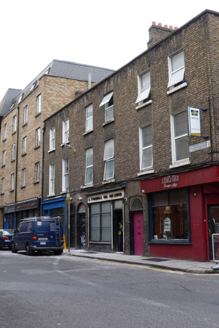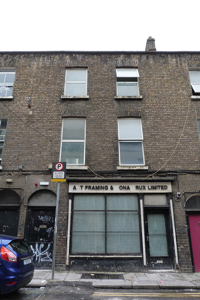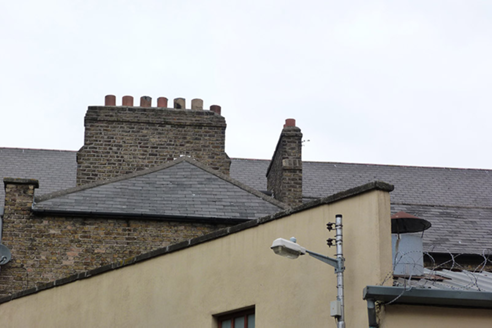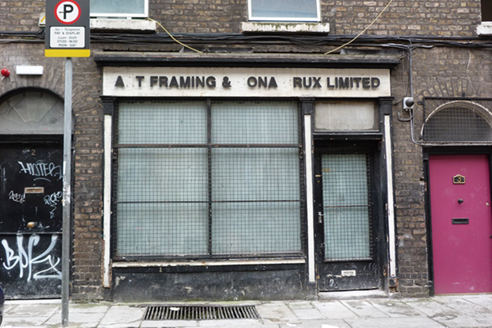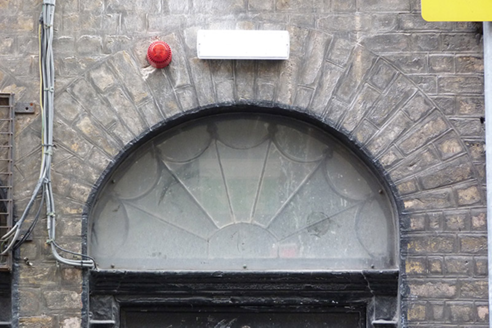Survey Data
Reg No
50110015
Rating
Regional
Categories of Special Interest
Architectural, Social
Original Use
Shop/retail outlet
In Use As
House
Date
1800 - 1820
Coordinates
315489, 233527
Date Recorded
28/04/2017
Date Updated
--/--/--
Description
Terraced two-bay three-storey house over basement, built c. 1810, having shopfront to ground floor with accommodation over. Pitched roof, hidden behind brick parapet with granite coping, having long brick chimneystack to west party wall with clay pots. Yellow brick walling, laid in Flemish bond, to front elevation. English garden wall bond brickwork to rear. Square-headed window openings with painted masonry sills and replacement uPVC windows. Round-headed door opening to east end of front elevation with rendered reveals, carved timber architrave with panelled pilasters and cobweb fanlight, and recent timber door. Shopfront comprises panelled timber pilasters supporting fascia and cornice, plain square-headed display window with timber sill and rendered stall-riser, square-headed shop doorway with recent glazed timber door and overlight. Granite kerbing and cast-iron grille to footpath.
Appraisal
This building was probably purpose-built as a commercial and residential structure, and forms part of a unified terrace with the houses to the east and west. The retention of a historic fabric, notably a timber shopfront and delicate fanlight, add to the architectural character of the composition. It maintains the parapet heights and fenestration alignment of its neighbours, adding a pleasing sense of continuity to the streetscape. Whitefriar Place is named for the Carmelite or White Friars, who were invited to St. Peter's Parish about 1230 by Robert Bagot, Chief Justice. They developed a religious house with associated gardens and buildings on the site now occupied by Our Lady of Mount Carmel Church. Following the Dissolution of the Monasteries the property was bequeathed to Nicholas Stanihurst, and subsequently came into the hands of Francis Aungier and was developed as part of the Aungier Estate.
